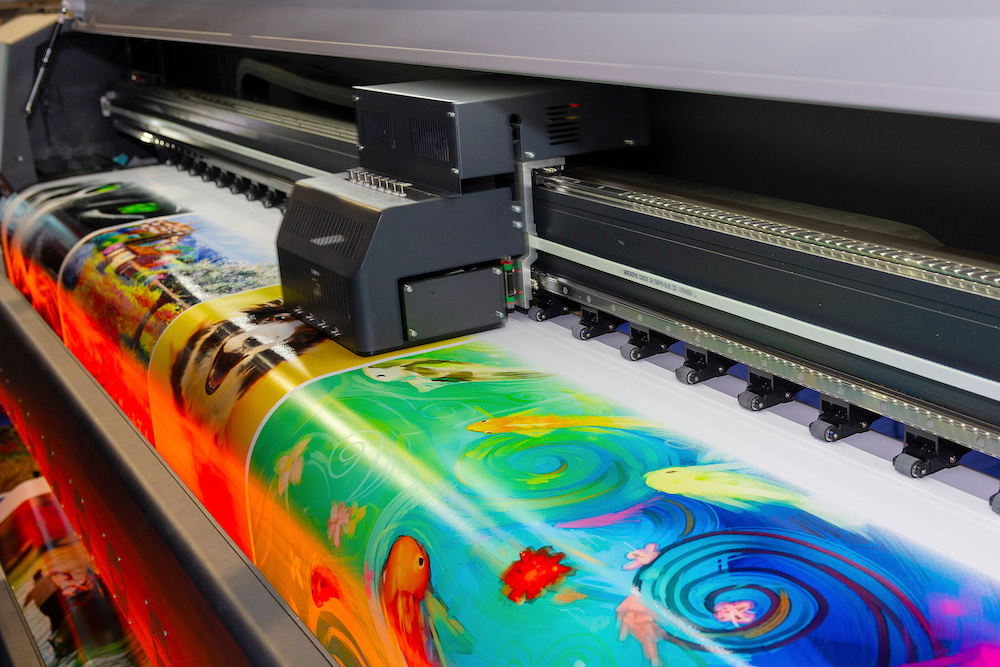Digital Printing Fundamentals Explained
Digital Printing Fundamentals Explained
Blog Article
Digital Printing - Truths
Table of ContentsDigital Printing for BeginnersThe Of Digital PrintingThe Ultimate Guide To Digital PrintingDigital Printing - An OverviewThe 5-Minute Rule for Digital PrintingDigital Printing - TruthsUnknown Facts About Digital PrintingThe 10-Minute Rule for Digital Printing
Personalization also permits organizations to stand out in a congested market by creating one-of-a-kind advertising materials that separate them from their competitors. Among the primary benefits of electronic printing is the ability to print variable information. Each printed item can be special, allowing organizations to produce personalized advertising and marketing materials that talk directly to their target market.Digital printing also enables for customization in the design of advertising and marketing products (Digital Printing). With digital printing, services can create styles that are special and customized to their specific needs.
The Facts About Digital Printing Revealed
By printing smaller amounts of advertising and marketing products, companies can minimize waste and stay clear of the demand for excess supply. Digital printing is likewise functional.
By using various materials and layouts, businesses can develop unique marketing products that stick out from their rivals and attract attention from their target audience. Digital printing additionally uses uniformity. With standard printing approaches, there is commonly variation in between prints due to distinctions in ink insurance coverage, stress, and other factors.
This consistency can aid develop consumer trust and reputation, revealing that the service is committed to offering premium materials. Uniformity is specifically important for companies that wish to construct customer depend on and integrity. By guaranteeing that every print corresponds, organizations can reveal that they are committed to offering top notch products and focusing on the details.
The smart Trick of Digital Printing That Nobody is Discussing

Furthermore, digital printing produces less waste since it can print as needed and in smaller amounts, decreasing the requirement for excess stock and materials. Digital printing also makes use of less energy contrasted to standard printing methods. Digital printers do not require as much power to run, as they do not require to heat up as much or utilize as much power to run.
Fascination About Digital Printing

Countered printing requires a plate for every color printed. Standard offset printing is a print approach that utilizes aluminum plates to move ink onto a rubber sheet (typically referred to as a "blanket"). The photo is after that rolled onto the printing surface. This printing technique is considered "countered" because the ink is not transferred to the paper straight.
Getting The Digital Printing To Work
Offset printing allows for a vast range of print products to be made use of during production. The top notch images generated via balanced out printing make it the preferred approach, specifically amongst graphic designers, when seeking the best shade recreation, information, and professional-looking prints.
For digital inkjet printing, ink is reference moved straight onto the surface. Instead than depending on aluminum plates and rubber coverings to transfer a photo, digital printing uses liquid ink during production.
5 Easy Facts About Digital Printing Shown
Due to the fact that countered printing can blend customized color inks for each work, it will naturally obtain the colors spot-on. Count on balanced out printing for clean, distinctive types and pictures without streaks or spots.
It costs a great deal to begin an offset job. You have to invest money into developing the plates, which takes some time. Once you have actually invested it, all of the materials are all set to go, and you'll spend less on check it out big offset work than an electronic print, which is regarding the very same per piece no issue exactly how large the job gets.
Each print is identical. You take the chance of less strange variants brought on by discrepancies in water and ink. Digital printing is much less expensive for low-volume tasks. The rate each drops for electronic printing, so eventually, they crisscross. Transforming details within a solitary print task. As an example, state you were publishing out postcards promoting a show.
The Definitive Guide for Digital Printing
While digital printing or inkjet printing is the preferred choice in the present times, there are engaging factors to convert from countered to digital printing systems. When publishing countered or digitally, crucial decisions and processes are entailed in color matching.
Whichever the instance, the shade will certainly need to be matched. Shade matching of digital printer ink is no more challenging with dyes and pigments. Industrial inkjet printing uses versatility for printing on lots of different substratums. Digital printing is suitable for consumers that do not require longer runs and warehousing materials.

One advantage of electronic printing is selecting from a vast array of digital substratums. With balanced out printing, substrates make up, usually, 30% of the price of the job. With electronic printing, the cost of the substrate in the overall work is minuscule. This permits more choices than in the past, and that's excellent for marketing experts and companies.
What Does Digital Printing Mean?
drop-on-demand is the 2nd printing technology to take into consideration. Constant inkjet systems require substantial upkeep, more operator training, and greater downtime. Tools expenses in inkjet printing are far reduced than balanced out printing as there are no plate-making, plates, and press expenditures. Past the Clicking Here capital expenditure, the prepress tools and printing presses need very proficient operators in countered printing, which includes labor expenses.
Report this page